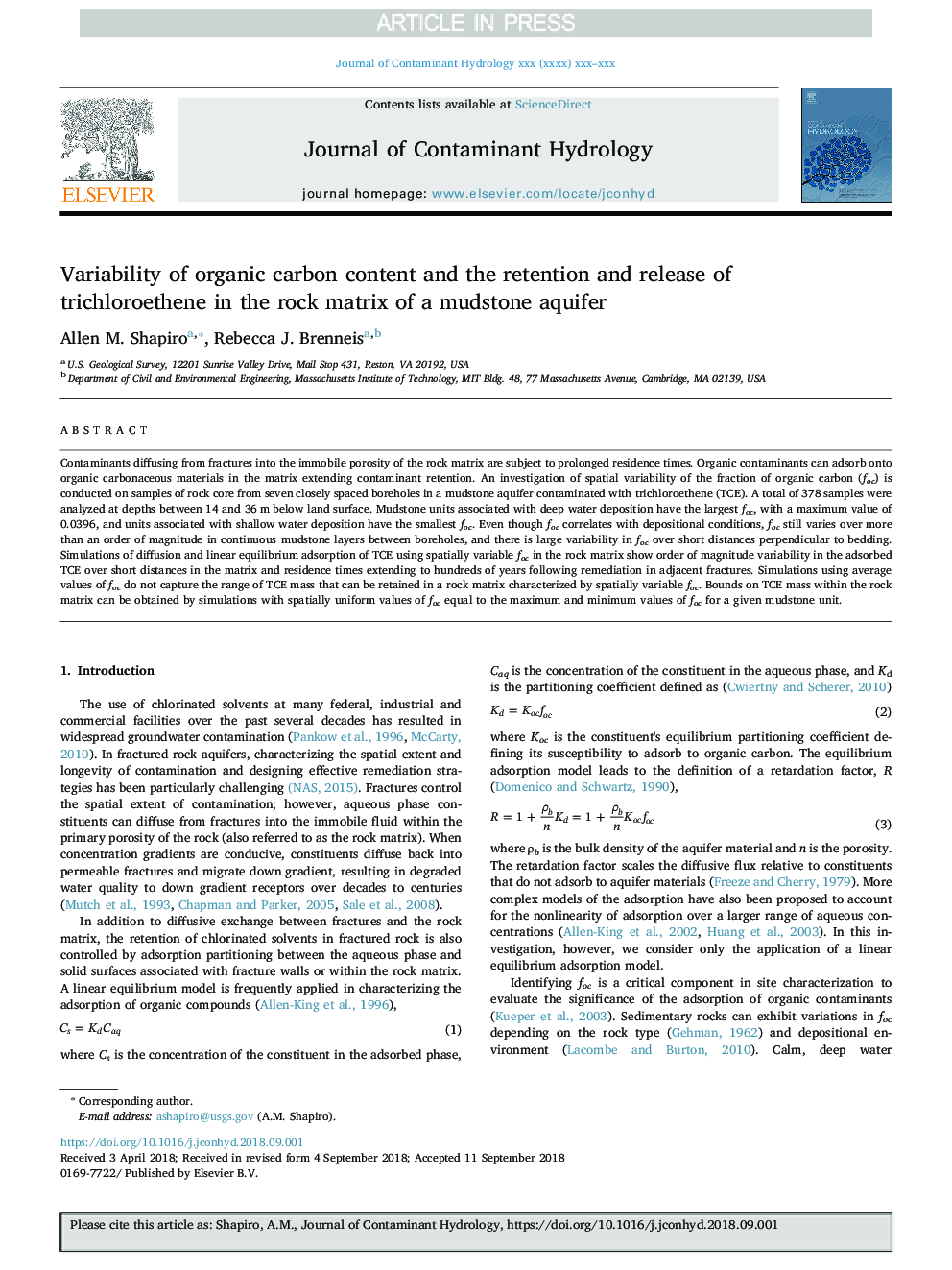| Article ID | Journal | Published Year | Pages | File Type |
|---|---|---|---|---|
| 11012961 | Journal of Contaminant Hydrology | 2018 | 11 Pages |
Abstract
Contaminants diffusing from fractures into the immobile porosity of the rock matrix are subject to prolonged residence times. Organic contaminants can adsorb onto organic carbonaceous materials in the matrix extending contaminant retention. An investigation of spatial variability of the fraction of organic carbon (foc) is conducted on samples of rock core from seven closely spaced boreholes in a mudstone aquifer contaminated with trichloroethene (TCE). A total of 378 samples were analyzed at depths between 14 and 36â¯m below land surface. Mudstone units associated with deep water deposition have the largest foc, with a maximum value of 0.0396, and units associated with shallow water deposition have the smallest foc. Even though foc correlates with depositional conditions, foc still varies over more than an order of magnitude in continuous mudstone layers between boreholes, and there is large variability in foc over short distances perpendicular to bedding. Simulations of diffusion and linear equilibrium adsorption of TCE using spatially variable foc in the rock matrix show order of magnitude variability in the adsorbed TCE over short distances in the matrix and residence times extending to hundreds of years following remediation in adjacent fractures. Simulations using average values of foc do not capture the range of TCE mass that can be retained in a rock matrix characterized by spatially variable foc. Bounds on TCE mass within the rock matrix can be obtained by simulations with spatially uniform values of foc equal to the maximum and minimum values of foc for a given mudstone unit.
Related Topics
Physical Sciences and Engineering
Earth and Planetary Sciences
Earth-Surface Processes
Authors
Allen M. Shapiro, Rebecca J. Brenneis,
